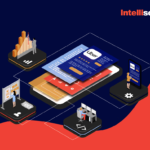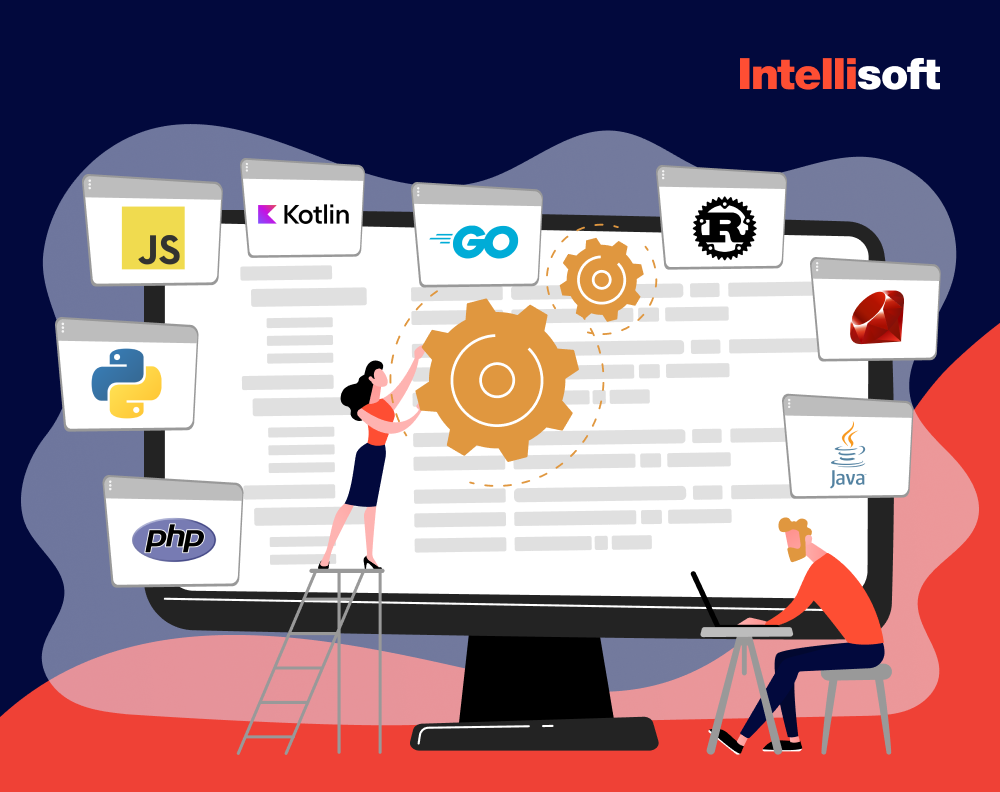Building a website or an app usually requires dealing with roughly the same set of basic components. Under the components, we mean the ways to manage user authorization. That is, for instance, how a user signs in, attaches files, and more. These activities are pretty much alike. So, why not make them way easier and faster? How is it possible to significantly decrease development costs? Web frameworks emerged as a set of components designed to make building websites a better experience for every developer.
Table of Contents
What is Django?
What is a Django? Let us introduce Django, an open-source web framework based on Python. It was named after the jazz guitar player Django Reinhardt. The framework appeared somewhere between 2003 and 2005. It keeps on expanding its community worldwide. It enables fast development, as you can see from websites made with Django. Many say that speed runs through the DNA of this framework. A need to serve fast-paced newsrooms motivated the creation of Django.
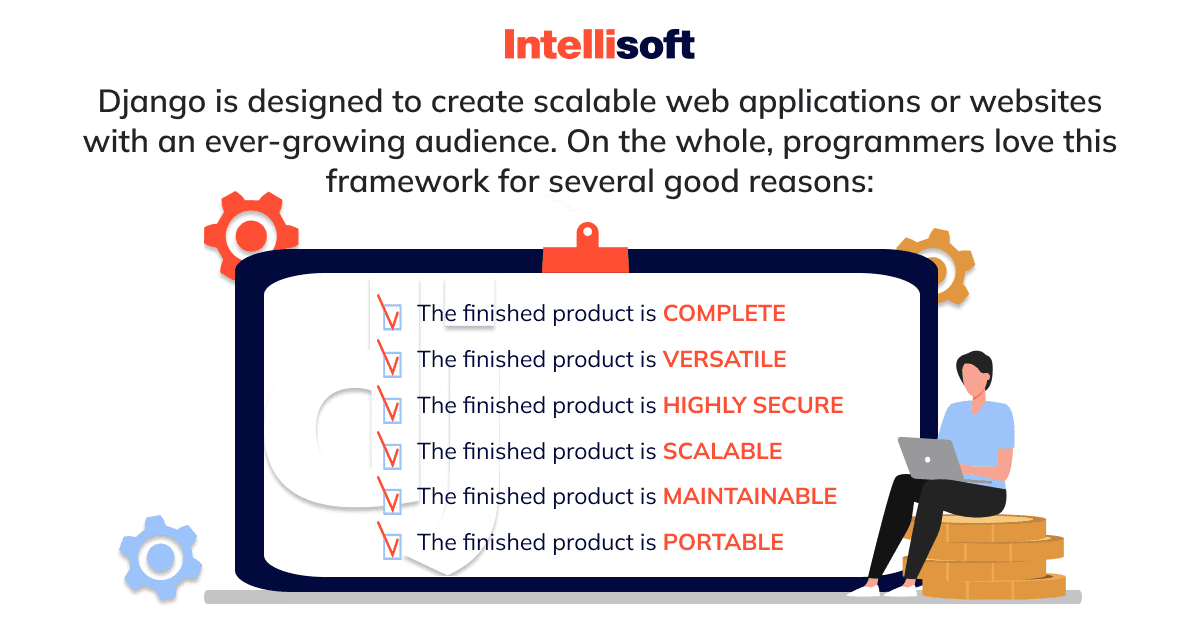 What is Django for? Django provides a number of useful features that, for example, a news site may need. They include a user panel, administrator features, various databases (SQLite, PostgresSQL, MySQL), etc. Django is also a popular choice for startups and weekend side projects.
What is Django for? Django provides a number of useful features that, for example, a news site may need. They include a user panel, administrator features, various databases (SQLite, PostgresSQL, MySQL), etc. Django is also a popular choice for startups and weekend side projects.
Is Django Front End Framework?
Is Django a backend framework? The answer is “yes.” Django is a high-level Python web framework that simplifies the creation of web applications and Django social media app by providing many built-in features and tools for backend development. Django web framework follows the Model-View-Controller (MVC) architectural pattern, where it primarily focuses on the backend logic, data management, and server-side processing.
However, Django does come with some basic features for generating HTML templates and serving static files, which are part of the user interface (UI), but it’s not a dedicated front-end framework like React, Angular, or Vue.js. For front-end development, developers often use JavaScript frameworks or libraries in combination with Django web framework to create the user interface and enhance user interactivity.
What Are the Benefits of Using Django in Software Development?
Django is a high-level Python web framework that promotes rapid development and clean, pragmatic design. There are several benefits to using Django in software development:
Rapid Development. Django follows the “Don’t Repeat Yourself” (DRY) principle, which means developers can write less code while accomplishing more when developing a website using Django. Its built-in features and conventions enable rapid development of web applications.
Scalability. Django’s architecture allows for scalability, making it suitable for building small to large-scale web applications. Its scalability is evident from its use in large Python Django websites like Instagram and Pinterest.
Batteries-Included. Django comes with a plethora of built-in features, such as an ORM (Object-Relational Mapping) for database interactions, an admin panel for content management, an authentication system, URL routing, form handling, and more. This reduces the need to integrate third-party libraries for common tasks when creating Python Django websites.
Security. Django provides built-in protection against common security threats like SQL injection, cross-site scripting (XSS), cross-site request forgery (CSRF), and clickjacking. It also encourages secure coding practices, such as password hashing and protection against common vulnerabilities.
Community and Ecosystem. Django has a vibrant community of developers contributing to its ecosystem. This means extensive documentation, numerous third-party packages, and active support forums. Developers can leverage this ecosystem to extend Django’s functionality and solve various problems efficiently.
Versatility. Django is versatile and can be used to build various types of web applications, including content management systems (CMS), social networks, e-commerce platforms, and more. Its flexibility allows developers to tailor applications according to specific requirements.
Portability. Django applications are portable across different platforms and hosting providers. Whether deploying on traditional servers or cloud platforms like AWS, Google Cloud, or Heroku, Django applications can be easily deployed and managed.
ORM (Object-Relational Mapping). Django’s ORM simplifies database interactions by abstracting away the complexities of SQL queries. Developers can work with database models using Python classes, which makes database operations more intuitive and less error-prone.
Admin Interface. Django provides an admin interface out-of-the-box, allowing developers to manage application data easily. This feature is particularly useful during development and for content management tasks.
SEO Friendly. Django’s clean and organized code structure, along with its URL routing system, facilitates the creation of SEO-friendly web applications. Developers can optimize URLs, meta tags, and content for better search engine visibility.
Who Uses Django Technology?
What are Django framework examples? Django, a high-level Python web framework, is used by a diverse range of organizations and individuals across various industries. Some common types of companies who use Django technology include:
Tech Companies. Django is popular among tech startups and established tech companies alike. Django website examples include Instagram, Pinterest, Disqus, and Bitbucket.
Media Companies. Django is utilized by media companies for content management systems (CMS) and publishing platforms. Examples include The Washington Times, National Geographic, and The Guardian.
E-commerce Platforms. Django is used to power e-commerce platforms and online marketplaces due to its scalability and flexibility. Notable Django website examples Mozilla’s Add-ons website and The Onion Store.
Government and Non-profit Organizations. Django is employed by government agencies and non-profit organizations for various purposes, such as data management, citizen engagement platforms, and public information portals.
Educational Institutions. Website made with Django used in the education sector for building learning management systems (LMS), student portals, and academic research platforms.
Financial Institutions. Django sites is utilized in the finance sector for developing banking applications, financial analysis tools, and trading platforms.
Healthcare Industry. Django is employed in healthcare for building electronic health record (EHR) systems, medical research platforms, and patient management systems.
Startups and Small Businesses. Django sites are popular among startups and small businesses due to its rapid development capabilities and extensive ecosystem of libraries and tools.
Overall, Django is chosen by organizations and developers who prioritize rapid development, scalability, security, and maintainability for their web applications and services.
Top Websites Created with Django That You Probably Know
What are Django websites? It’s not that easy to understand how the mechanism works without having some examples. The following list of websites will give you a clue. We believe that you know most of these platforms.
These famous websites using Django that help people to interact, retrieve necessary information, get answers to urgent questions, buy goods and services, and do many other things will help us to analyze the main benefits of this high-quality Python-based open-source web framework known as Django.
Consider websites that use Django more than just examples – they may serve as inspiration for how you can develop your projects. So, perhaps, it is the right time for you to start thinking about switching to Django or hiring engineers from Intellisoft to complete your project? Here is the list of Django framework examples:
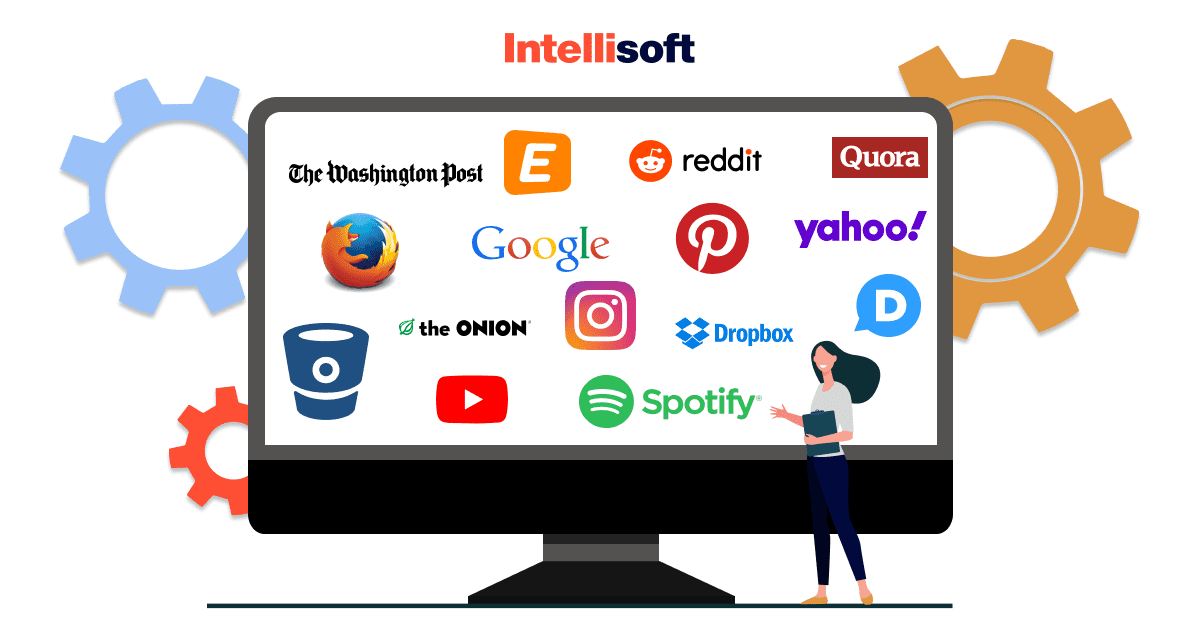
Disqus
To answer the question what websites use Django, Disqus will be first on the list. Disqus is a US blog comment hosting service. That is fairly one of the greatest apps built with Django. It allows you to implement comments and discussion options on your website, analyze audience activity, and customize ad impressions. Using Django’s infrastructure allowed the team not only to build the website quickly, but also keep scaling it up for millions of new users. Nowadays, the Disqus team uses other frameworks as well, but Django remains the best choice because of its ever-growing community and many ready-to-implement options.
Instagram is the most popular social network after Facebook, its parent company. Over 1.393 billion people use Instagram every month. It allows users to post photos and get into the lives of not only their friends, but also various celebrities around the world. Instagram is a mobile app, but if we talk about its web version, it is entirely built on Python Django.
Instagram, one of the fastest-growing social networks, is another example of a website that does not plan to switch from Python + Django. Why is it so? Instagram, has to handle huge amounts of data and user interactions (likes, posts, comments, etc.). With Django, the Instagram team can handle it all, in addition to benefiting from deployment-ready tools that allow them to focus on UI and UX.
Spotify
Like iTunes, Spotify has changed the way people listen to, share, and purchase music tracks at no charge. The fact that its services are free with no compromise to quality makes this site so popular among both musicians and their fans. With its help, you can access your music library anywhere, on any device. The Spotify app is very convenient as it allows you to quickly find relevant music and add it to your favorite playlist. The developers chose Django for two reasons:
- Fast backend
- Machine learning options
With Django, not only did they get the full range of Python features, but they also made the most of it.
Related readings:
- Step-by-Step Guide to Integrating a Paperless Document Management System
- RabbitMQ vs Kafka: Choosing the Right Messaging System for Your Needs
- Typescript vs Javascript: Which Programming Language Fits Your Project?
- Story Point to Hours: Which Estimation Approach to Choose?
- Making Sense of Databases: How to Choose the Right One
YouTube
A website that clearly needs no introduction. The largest video hosting platform YouTube is a part of Google Company, which uses Python and Django framework in many of its projects. YouTube is no exception. In fact, the entire gigantic platform is written on this framework.
It was first built in PHP, but the rapid growth of the audience and the need for fast implementation of new features led the team to join the Django community. The choice was completely justified, as audience growth hasn’t stopped (lucky for them) and new features appear quite often (lucky for users).
The Washington Post
Another answer on what websites use Django is The Washington Post. Interestingly, Django was originally created to support a content application for Lawrence Journal-World. The Washington Post, The Guardian, The New York Times, and other Django web app examples are now very scalable and can handle large amounts of data generated by their daily audience.
Pinterest is pretty much similar to Instagram, is one of Django uses. Its users can also share various pics, but only those that match their interests. Thus, a user should select a category first. For example, if a user creates a pin about the world’s fastest cars, you will get a lot of images of fast cars when you subscribe to this person.
BitBucket
This cloud-based Git repository, launched back in 2008, has attracted millions of developers. With 17 million requests and six million repositories per year, it is one of the busiest Django-based web apps.
The BitBucket team decided to use Django for several reasons. First, it is the thousands of experienced developers in their community. The second reason, which we mentioned earlier, is the set of Django solutions that are ready to be deployed.
That is fairly one of the most popular platforms built on Django. Thanks to this structure, Pinterest users can subscribe to other users and share their boards.
Google Search
Google has been using Python in many of their products for a long time. They have always seen the potential of this programming language and tried to implement it as much as possible and as often as possible. The company also uses Python and the Django framework for its main project, Google Search Engine.
DropBox
One of the world’s largest data storage websites, or simply put, cloud storage. DropBox has created a new way to store data. Now, instead of a PC, users can keep their data on the cloud. Dropbox allows consumers to store, sync, and share almost anything using the power of Python.
The most famous and popular cloud app for storing documents, videos, graphics, etc. makes it possible to access your files anywhere and from any device. The only condition is a stable internet connection.
Python was used to create the backend and client software. This allowed the team to come up with a product relatively quickly. Using Django, the developers were able to add a user history option, synchronize the account across devices, and most importantly, add a file sharing option.
Yahoo Maps
In general, Yahoo uses the Node.js platform for its projects. However, they decided to use the Python language to create their maps. Yahoo Maps is a regular, good map that allows you to have an idea of how you can get from point A to point B. In the CIS, this search engine is not popular, but in the West, it is a very large and frequently used search engine. The maps from Yahoo are considered reliable, so many people use them in their daily travels. They can help to get out of the woods when being lost.
Eventbrite
Another Django site is Eventbrite, a ticketing service and event management platform. Originally built using Python and proprietary environments, it later migrated to Django to cope with the rapid growth of the platform’s audience and interaction volumes. Because of Django’s scalability, Eventbrite, like many other Django-built websites and Django examples, can adapt to any audience volume and constantly provide users with new updates.
Reddit is one of websites built with Django. It is the largest social news project. Users can post various articles, as well as comment and vote on other authors’ articles. It is enough to sign up at this service to use all those features for free. On this website, one will find thousands of online news and debates on various topics. Most of the functionality is done in Python alone.
Onion
Onion is one of Django website example, a satirical newspaper that has an online version. All publications, design, and functionality of their website are done in Python using Django.
Quora
Quora is one of the popular websites built with Django for questions and answers. It is like an FAQ section where all registered users can impose questions or leave comments and react to what other people say. On this website, users can ask various questions and other users can answer them or at least share some valuable tricks and hints. The more questions you answer, the higher your rating will be on this platform. So, if you don’t know the answer to something, the easiest way to get an answer is to ask Quora users.
Mozilla
One of the most popular browsers, Mozilla, must handle hundreds of millions of requests per month. Given the number of requests they get through the API, it’s easy to see why the team decided to switch from PHP + CakePHP to Python + Django. Mozilla’s support service and all of their browser add-ons now run on Django.
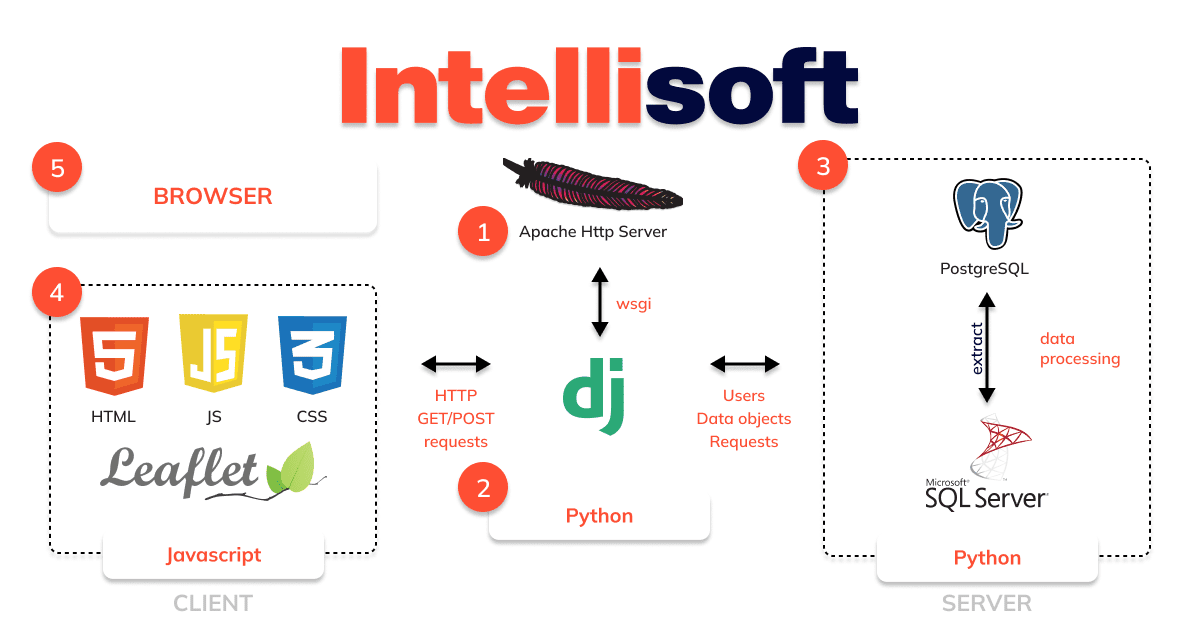
How Does Building a Website With Django Happen?
So, we reviewed companies that use Django for their websites. But what can you do with Django? Building a website with Django involves several steps. Django is a high-level Python web framework that encourages rapid development and clean, pragmatic design. Here’s a general guide to get you started Django website development:
Install Django. The first step toward Django website development is to have Python installed on your system. You can then install Django using pip, the Python package manager. Run the following command in your terminal or command prompt:
pip install django
Create a Django Project. Once Django is installed, you can create a new Django project using the django-admin command-line tool. Navigate to the directory where you want to create your project and run:
django-admin startproject projectname
Create Django Apps. Django follows a modular approach where different parts of your website are implemented as apps. You can create a new Django app within your project using the following command:
python manage.py startapp appname
Define Models. Models represent the structure of your data. Define your models in the models.py file of your app. This involves creating Python classes that subclass django.db.models.Model.
Create Views. Views handle the logic of your web application. They receive requests from the client, process them, and return responses. Views are defined in the views.py file of your app.
URL Configuration. Define URL patterns to map URLs to views. This is done in the urls.py file of your app.
Templates. Templates are used to generate HTML dynamically. Create HTML templates for your web pages in the templates directory of your app.
Static Files. Static files such as CSS, JavaScript, and images are served directly by Django during development. Place your static files in the static directory of your app.
Migrate Database. Once you define your models, you need to create database tables based on those models. Run the following command to apply migrations:
python manage.py makemigrations
python manage.py migrate
Run Development Server. Start the Django development server by running the following command:
python manage.py runserver
Access Admin Interface (Optional). Django provides a built-in admin interface for managing site content. Create a superuser account to access the admin interface:
python manage.py createsuperuser
Then, navigate to http://127.0.0.1:8000/admin in your browser to access the admin interface.
Write Tests (Optional). It’s good practice to write tests to ensure your code behaves as expected. Django provides tools for writing and running tests.
Deployment. When you’re ready to deploy your Django website to a production server, you’ll need to configure a web server (like Nginx or Apache) and a WSGI server (like Gunicorn) to serve your Django application.
How to Choose Django Company?
Choosing the right Django development company plays a crucial role in the success of your website or application. It’s not just about the technology—it’s about the team behind it. To make an informed decision, consider these key factors:
- Ensure the development team has proven expertise in Python and Django. Look for signs that they fully leverage the framework’s capabilities, including libraries, extensions, and APIs. Developers who follow best practices, such as those outlined in the PEP 8 Style Guide for Python, and adhere to guidelines from sources like MDN Web Docs, demonstrate a solid foundation in quality coding.
- Take time to review the contractor’s portfolio and client feedback. A well-documented track record, particularly from high-profile clients, can provide insight into their ability to handle your project. Additionally, arranging a meeting with the company’s management and developers is vital. In this initial conversation, you’ll get a sense of their competence, communication skills, and interest in your project. If they propose valuable ideas and align with your expectations for functionality and quality, that’s a strong indicator you’re on the right path.
- Consider whether the contractor can manage the entire web development cycle. You’ll need a team that includes UI/UX designers, front-end and back-end developers, QA testers, and DevOps professionals, alongside project managers and business analysts. Their ability to support every phase of development, from design to deployment, is key to the project’s success.
- Check for the company’s commitment to post-launch support and future development. If a contractor shows little interest in the ongoing success of the Django webpage, that’s a red flag. Be sure to ask how they handle maintenance, bug fixes, and scaling to ensure the long-term stability of your site or app.
- Review the pricing policy. A reputable Django backend development company should offer a detailed breakdown of costs and timeframes, especially when refining existing projects or conducting code audits. This not only reflects their experience but also their understanding of your project’s complexity.
- Discuss the cooperation model and workflow. It’s crucial to gauge the company’s maturity in managing projects and communicating regularly. A Django company with well-established internal processes will make collaboration smoother, and an agreement on communication standards, including NDAs, will help build trust. Cultural compatibility between teams is also something to consider for a successful partnership.
By carefully considering these aspects, you’ll be well on your way to selecting a Django sites framework company that can turn your vision into reality. Remember, web development is a long-term journey, so it’s worth taking the time to choose the right partner who will be with you every step of the way.
How to Maintain Websites Developed with Django?
Maintaining high-load Django web apps—like those mentioned earlier—requires consistent effort to ensure they remain stable, glitch-free, and perform without errors. Achieving this level of reliability depends heavily on top-tier maintenance practices and keeping the technology current.
When you’re looking to maintain a website built by another developer, an experienced software development company can be a great partner. They bring a fresh perspective, often breathing new life into web projects by refining the code and addressing any existing issues, such as “code smell.” Sites that use Django can sometimes accumulate technical debt (or code debt), which happens when developers prioritize quick delivery over fixing underlying issues.
A fresh team brings the expertise needed to plan and implement code refactoring, improving the existing codebase. This process ultimately boosts the site’s reliability, usability, and overall performance.
For a successful maintenance strategy, certain conditions must be met:
- A skilled team of developers, particularly senior specialists, at the project’s core.
- Up-to-date Django tech stack, including regular updates to frameworks and libraries in use.
- Comprehensive software documentation covering all aspects of the site, including APIs, deployment processes, and system architecture.
- Proper server configuration with key features like monitoring, automatic reboots, auto-renewal of certificates, and security settings.
- Source code management via a Version Control System (VCS) that allows for organized handling of code changes, reducing conflicts and improving collaboration.
- Robust testing systems that include both automated tests (e.g., unit testing and Selenium for web testing) and manual testing, ensuring all elements function properly.
- Sound server architecture, built around the development-test-production (dev-test-prod) model. This ensures that development and testing are done in separate environments from the live site, preventing any impact on users. Additionally, a “Preprod” environment mimics the live system, allowing for final checks before launch.
- A detailed Service-Level Agreement (SLA), outlining key performance metrics like uptime, response time, maintenance schedules, and recovery processes. This ensures that the contractor fully understands and adheres to the client’s expectations throughout the maintenance period.
It’s important to remember that maintaining a Django-based site involves more than just technical fixes or routine support. As business requirements change and features evolve, the site must be continuously updated, with new versions deployed to keep pace. This ongoing web development with Django is a critical part of long-term website maintenance. Therefore, you can join the number of companies using Django successfully.
Final Thoughts
Of course, the number of sites built in Django is well over those discussed in this post. You can also check, for instance, Prezi, the official NASA website, or National Geographic. This is just a small part of all the sites which were created with Django tech. Also, if you need qualified developers to help with your projects in Django, feel free to contact us at any moment!

